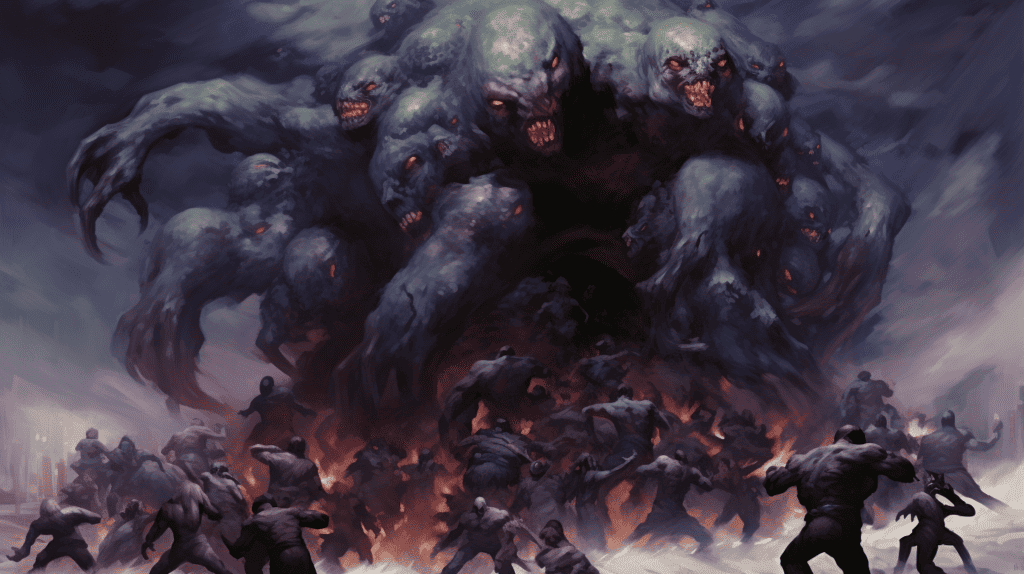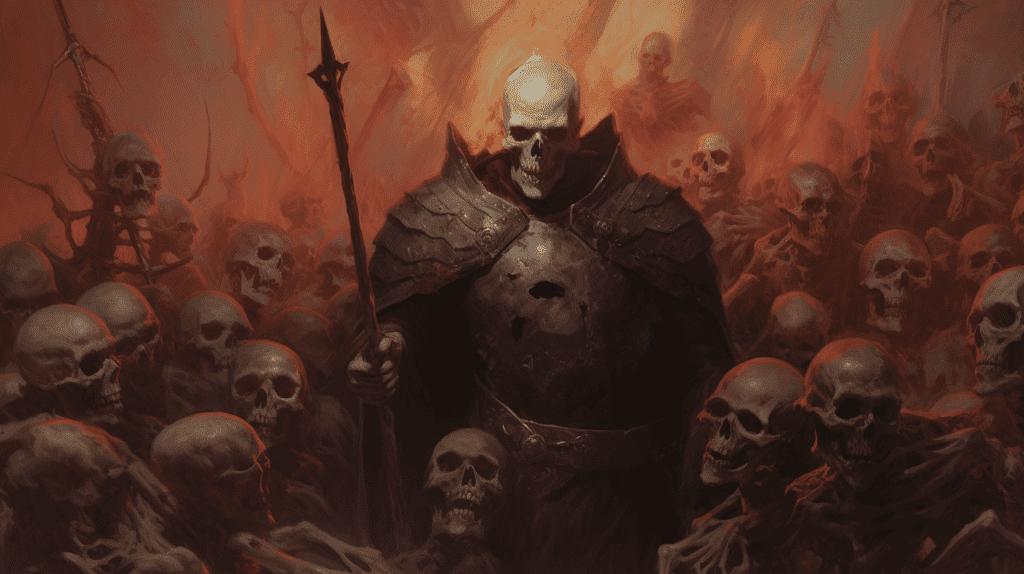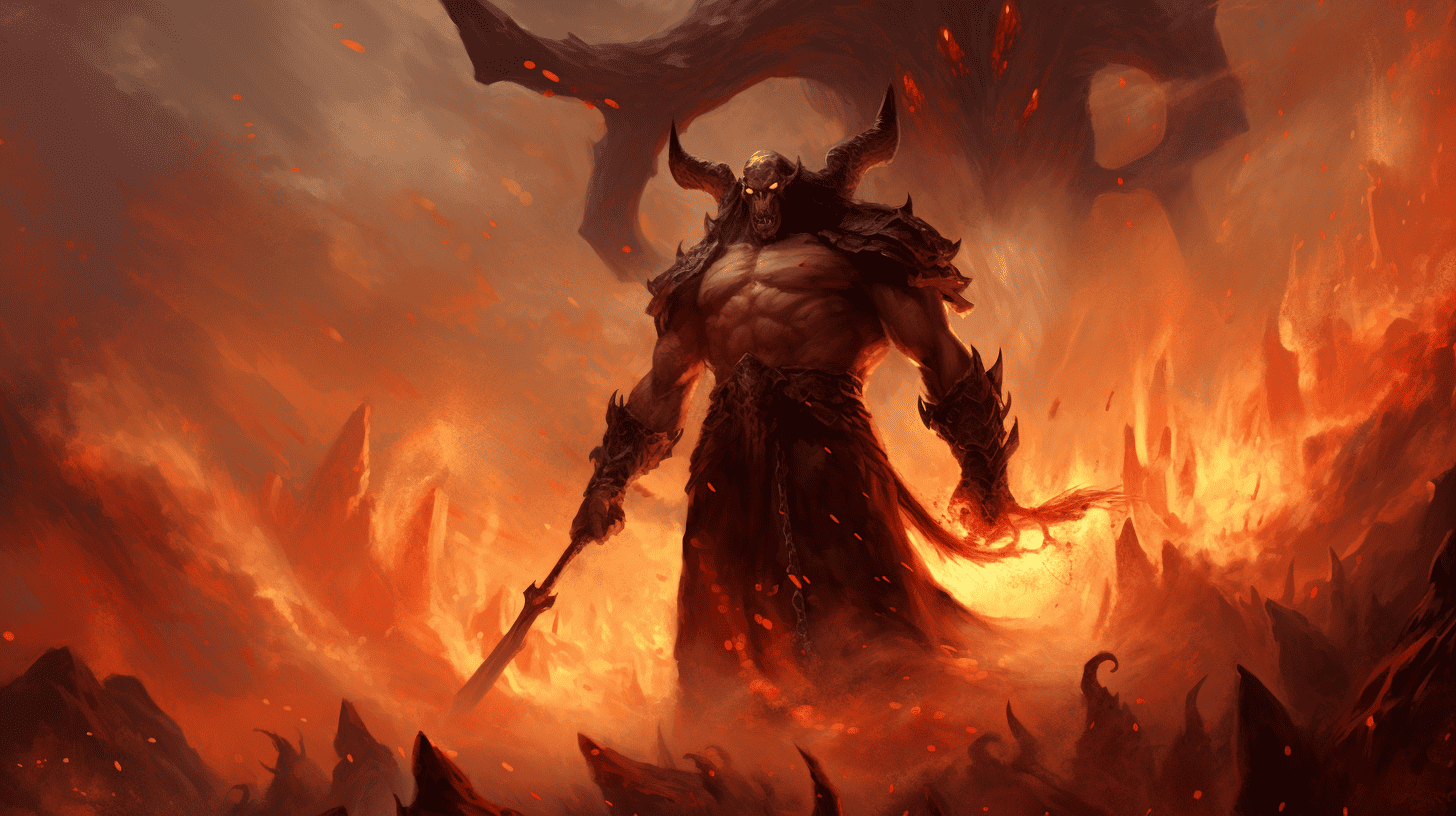Ever since the early-access stages of the game, players all over the world have been trying to figure out how the game’s damage system works in the hopes of mastering it – instead of just winging it, as one does in the beginning.
Players who are familiar with Dungeons and Dragons 5e will, without a doubt, have a great understanding of the damage system, as Baldur’s Gate 3 is built using DnD’s systems.
The system can be a bit overwhelming at first – even if you only focus on the battle system, as it has to take a bunch of different things into account when determining the outcome of an attack action.
We hope to make it easier for you to understand how the game works and how you can use that to your advantage in battles.
So, how does damage work in Baldur’s Gate 3? It’s hard to explain the matter simply, and I will go into greater detail to make it easier to grasp, but here’s a quick explanation.
Whenever your character attacks, dice are rolled to determine if the attack hits. If the attack hits, the damage dealt is determined by rolling one or more dice representing the weapon used and then adding the ability modifier. Hovering over a weapon will show you what type of die is used to roll for damage. The target’s resistances and vulnerabilities are then put into the equation, affecting the final damage.
But in order for you to understand the concept better, I think we must go into greater detail. This will make it easier for you to anticipate how much damage your attacks will deal, and the likelihood of them hitting their target.
Ultimately, giving you more to base your in-battle decisions on.
How To Calculate Damage In Baldur’s Gate 3

Attacks in Baldur’s Gate 3 cost one standard Action to perform, with a few exceptions that we don’t need to mention now. Prior to performing the attack, there are two things to take into consideration.
- Will the attack hit?
- How much damage will it deal if it does hit?
This is then determined by rolling dice. You’ll see things like “1d4” or “1d20” everywhere in the game. The first number determines how many dice are used in the roll and the second number determines how many sides the dice have. A 1d20 can result in any number between 1-20.
The formula to calculate if an attack is a hit or miss is the following:
Your attack will succeed if the total sum of a 1d20 + your modifier exceeds the target’s armor class.
Your attack will fail if the total sum of a 1d20 + your modifier doesn’t exceed the target’s armor class.
So, a 20-sided die is rolled and a modifier is then added to the result of the roll to determine if the attack hits.
So, what’s a modifier and how do you know how high your modifier is? There are different types of modifiers, and which one is used depends on the type of attack you perform.
We’ve written an article that explains armor class in great detail. You can find it here.
Calculating Weapon Attacks In Baldur’s Gate 3
Let’s start by looking at a weapon attack
When performing a regular weapon attack, the modifier would be either the attacker’s Strength or Dexterity, depending on the type of weapon. Ranged, versatile, and finesse weapons are Dexterity-based, while the rest of them are Strength-based.
Let’s say that a character performing an attack with a strength-based weapon has 18 strength points. The modifier is then calculated by taking the character’s total strength minus 10 divided by 2. In this case (18 – 10 / 2 = 4) the character’s modifier would add an additional 4 to the 1d20 roll.
The formula for a regular weapon attack to hit would look something like this:
1d20 + Weapon-specific ability modifier + any proficiency bonus + any related feat bonuses = chance to hit
Wielding a weapon that the character is proficient in grants them a proficiency bonus in addition to the modifier and other bonuses that they may receive through feats, which characters are granted the first time at level 5.
With all of these effects in play, the character has a very high chance of hitting its attacks. It should be noted that wielding a weapon that the character isn’t proficient in will not only remove the bonus but also prevent the character from using the weapon’s unique traits.
Nevertheless, if the attack hits the target, then there’s a second sequence of rolls that are put in motion to calculate the damage dealt by the attack. The formula used to calculate damage looks like this:
Weapon’s damage + weapon-specific ability modifier + any related feat bonuses = damage dealt
If a rogue with 20 dexterity wielding a dagger performs an attack. The calculation starts by rolling the type of die used by the weapon. Daggers use a 1d4, which means the outcome will be a number between 1-4.
The weapon-specific ability modifier is then added. In this case, this would be the character’s dexterity. For a rogue with 20 Dex, that would equal 5 (20- 10 /2).
Feat bonuses are then added to the roll. For the sake of this calculation, I’ll skip those.
In this scenario, our rogue’s main hand dagger would hit for 1-4 + 5 damage. It works the same way for weapons that are strength-based.
Let’s look at how magic spells are calculated before we take resistances, vulnerabilities, immunities, and critical hits into the equation.
Calculating Magic Attacks In Baldur’s Gate 3
When it comes to magic attacks, the calculations are a bit different from weapon attacks. There are two types of magic attacks in the game.
- Magic attacks that use attack rolls.
- Magic attacks that use saving throws.
When calculating magic attacks that deal damage, the first part of the roll consists of determining if the spell hits. The formula used is similar to that of weapon attacks and looks like this:
1d20 + proficiency bonus + Spellcasting Modifier + any feat-related modifiers = chance to hit
Wizards, whose spellcasting modifier is Intelligence, have their Intelligence modifier added to their rolls much like rogues have their dexterity modifier added to their attacks. As a spellcaster, your spellcasting modifier is added to determine the effectiveness of the spells you cast.
If the attack hits, the damage is calculated just as a weapon attack is – but with the spellcasting modifier added instead of the weapon-specific modifier.
The part that makes magic attacks a bit different is the second type of magic attack. The one that uses Spell Save Difficulty Class (Saving Throws) instead of attack rolls. In short, they’re performed like this.
- Spell Attack = You Roll
- Spell Save = They Roll
Your character’s spell save DC determines how high the target must roll in order to pass the saving throw and mitigate the effects of the given spell.
Your spell save DC is calculated the following way:
8 + Proficiency Bonus + Spell Casting Ability Modifier
If the target meets or beats it, then they can take either half or no damage, depending on the spell’s description. Other than that, magic attacks work similarly to weapon attacks. They just rely on different stats.
But let’s continue looking at other things that impact the outcome of an attack and the damage it deals. By the way, I’d recommend learning a bit about disadvantage and advantage in Baldur’s Gate 3. Two mechanics that impact combat substantially.
Vulnerabilities, Resistances, and Immunities Baldur’s Gate 3

Now that we’ve calculated the damage input, we’ve got to take vulnerabilities, immunities, and resistances into consideration before we land on the final number of damage an attack makes.
To understand these, it’s imperative to understand that there are multiple types of damage in the game:
Physical (Non-magical)
- Bludgeoning
- Slashing
- Piercing
Physical (Magical)
- Acid
- Thunder
- Necrotic
- Fire
- Lightning
- Cold
- Psychic
- Poison
- Radiant
- Force
When any of these types of damage are dealt to a target. The target can be affected in four ways.
- Vulnerable – Take x2 damage from that type
- Normal – Roll normally
- Resistant – Take 1/2 damage from that type
- Immune – Take no damage from that type
Let’s imagine you’re up against a target who is vulnerable to fire. You strike that enemy with a weapon that you’ve dipped in fire. The weapon now deals 8 bludgeoning damage and an additional 4 fire damage.
Because the target is vulnerable to fire, the ultimate number will end up being 8 bludgeoning damage plus 8 fire damage, as the creature’s vulnerability to fire causes all your fire damage to double.
In another scenario, where the creature is resistant or immune to fire, the attack would either do 8 bludgeoning damage and 0 or 2 fire damage depending on if the creature was immune or resistant to fire.
You can find out about a creature’s weaknesses and strengths by left-clicking on them and selecting Examine. Use this information to your advantage when planning your attacks, as these things impact the outcome of your attacks a lot.
How Do Critical Hits Work In Baldur’s Gate 3?

In addition to all of the above, an attack can also be a critical hit or a critical miss.
- Critical hit: the attack hits regardless of any modifiers or the target’s armor class.
- Critical miss: the attack misses regardless of any modifiers or the target’s armor class.
Your attack roll must be a natural 20 (meaning the 1d20 attack roll is a 20 before bonuses are added) in order for the attack to become a critical hit. A critical miss, on the other hand, only occurs if the 1d20 roll is a natural 1.
Rolling an 18 and then having a bonus of +2 will net a 20, but it’s not a natural 20 and will, therefore, not result in a critical hit.
The numbers needed to perform critical hits or misses can be adjusted with feats and certain items, making it more difficult or easy to achieve them.
In addition to ensuring that the attack hits, a critical hit will also increase the damage dealt by the attack.
See, when you score a critical hit, you get to roll extra dice for the attack’s damage against the target. You roll all of the attack’s damage dice twice and add them together. Any relevant modifiers are then added as normal.
For instance, a rogue who scores a critical hit with a dagger will roll 2d4 for the damage as opposed to 1d4. The attack modifier is then added to the number. If the attack includes other damage rolls, such as a rogue’s Sneak Attack, then those dice are rolled twice too.
Some spells, like Hold Person or Sleep, cause the attacker to get an automatic critical hit. Some feats can increase the range of critical hits for certain weapons.
This means that some characters, when equipped with certain weapons, can deliver a critical hit when the 1d20 roll is both 19 and 20, increasing the chances of a critical from 1 in 20 to 2 in 20.

